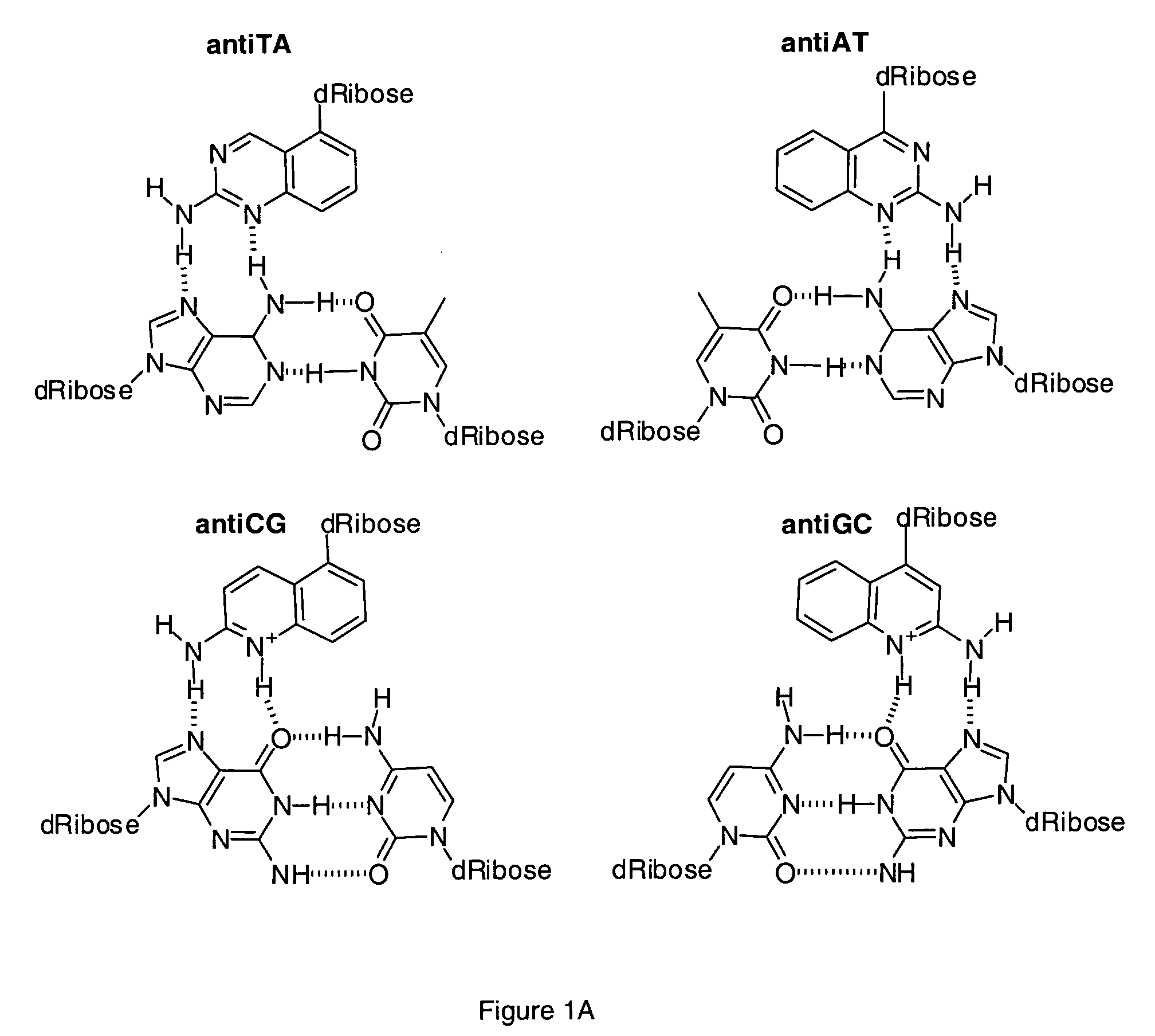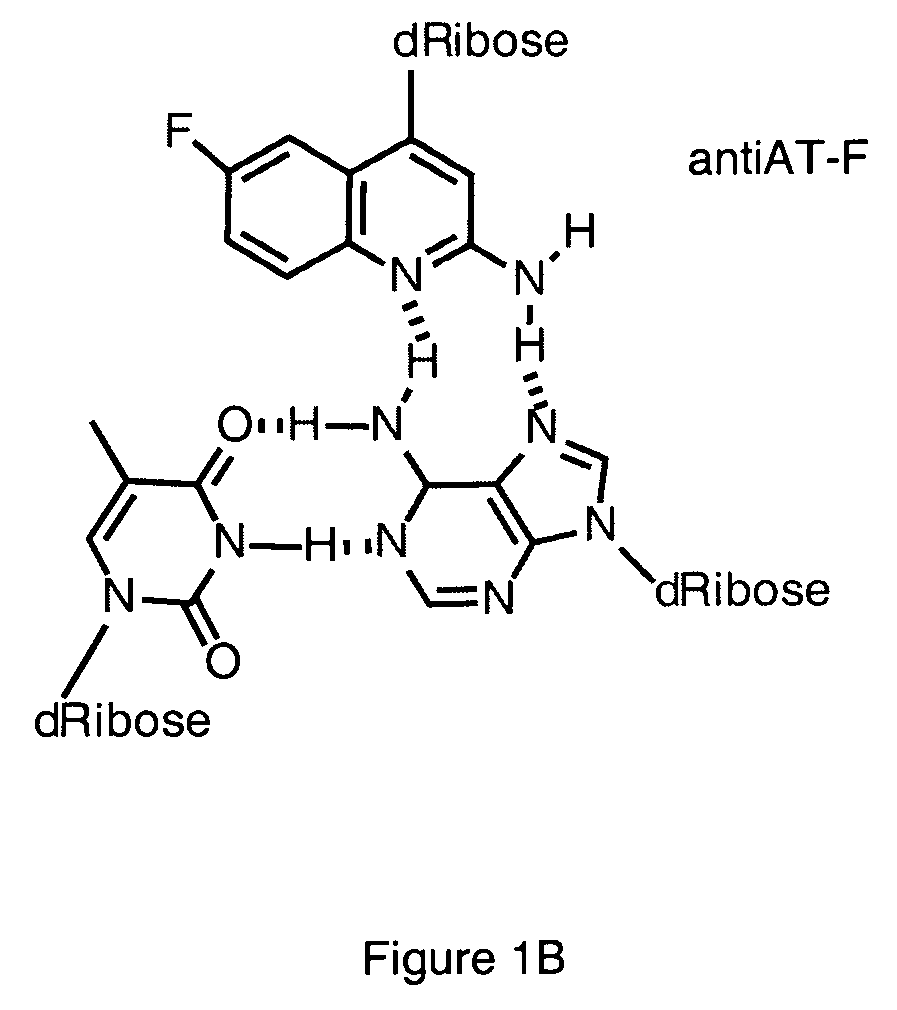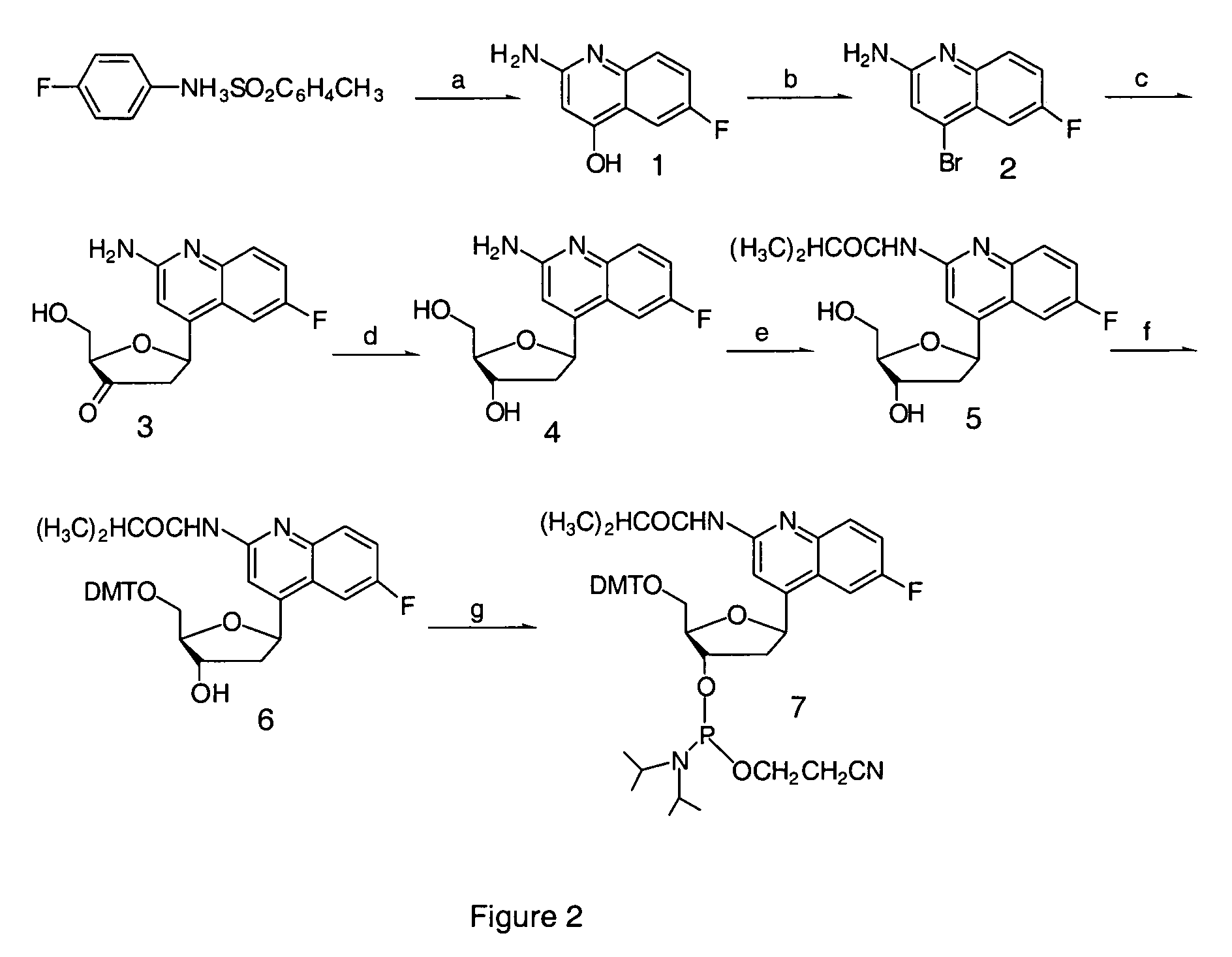Halogenated aminoquinolines and methods for forming DNA triplexes
a technology of aminoquinolines and triplexes, which is applied in the direction of saccharide with heterocyclic radicals, sugar derivates, organic compounds of the group 5/15 element, etc., can solve the problems of destabilizing traditional triple helix formation, limiting the span and flexibility of the 5′-3′-linked deoxyribose/phosphodiester backbone, and reducing the synthesis efficiency of oligomers with antiat by solid phase synthesis
- Summary
- Abstract
- Description
- Claims
- Application Information
AI Technical Summary
Benefits of technology
Problems solved by technology
Method used
Image
Examples
example 1
2-amino-6-fluoro-4-(2′-deoxy-β-D-ribofuranosyl)-quinoline
[0087] A method of synthesizing the monomer antiAT-F, which exhibits superior results in the solid phase synthesis of oligonucleotides as compared to antiAT, is provided herein.
[0088] Synthesis of 2-Amino-6-fluoro-4-hydroxyquinoline (1). 4-Fluoroanilinium toluene-p-sulphonate (76 g) is heated at 260° C. for 5 minutes under N2 and ethyl cyanoacetate (30 g) was added dropwise through an air-condenser within 5 minutes. Then the temperature of the reaction was allowed to drop to 220-250° C. After 90 minutes of heating, the orange slurry was cooled, CHCl3 (100 mL) was added, and the resulting mixture refluxed overnight to dissolve the solid. This solution was vigorously mixed with H2O (100 mL), EtOH (40 mL), and saturated Na2CO3 solution (100 mL). The resulting slurry was filtered, and the product, a pale-yellow solid, dried in vacuo over P2O 5 (7.4 g, 15% yield): 1H NMR (DMSO-d6) δ 5.26 (bs, 1 H), 6.22 (s, 2 H, NH2), 7.32 (m, 2 ...
example 2
Intramolecular Triplex Formation with antiAT-F
[0098] The ability of antiAT-F (4) to form a triplex structure with high specificity with A:T base pairs was evaluated by determining the stability of a series of putative intramolecular triplexes using UV-visible spectroscopy. The antiAT-F deoxynucleoside has a λmax at 325 nm, which makes it convenient to monitor absorbance changes commonly observed for aromatic systems when they unstack from a triplex or duplex. In addition, by monitoring the λmax at 260 nm it is possible to observe the natural nucleobases as the duplex segment melts. It has previously been observed that 2 the extinction coefficient of fluoro-substituted quinolines decreases by approximately 35% as the environment of the heterocycle changes from less polar (95% EtOH) to more polar (10% EtOH) solvent (Miller et al. (1950) J. Am. Chem. Soc., 72:1629-1633). This is the opposite of what is observed for the natural nucleobases; therefore, the temperature-dependent UV-vis o...
PUM
 Login to View More
Login to View More Abstract
Description
Claims
Application Information
 Login to View More
Login to View More - R&D
- Intellectual Property
- Life Sciences
- Materials
- Tech Scout
- Unparalleled Data Quality
- Higher Quality Content
- 60% Fewer Hallucinations
Browse by: Latest US Patents, China's latest patents, Technical Efficacy Thesaurus, Application Domain, Technology Topic, Popular Technical Reports.
© 2025 PatSnap. All rights reserved.Legal|Privacy policy|Modern Slavery Act Transparency Statement|Sitemap|About US| Contact US: help@patsnap.com



